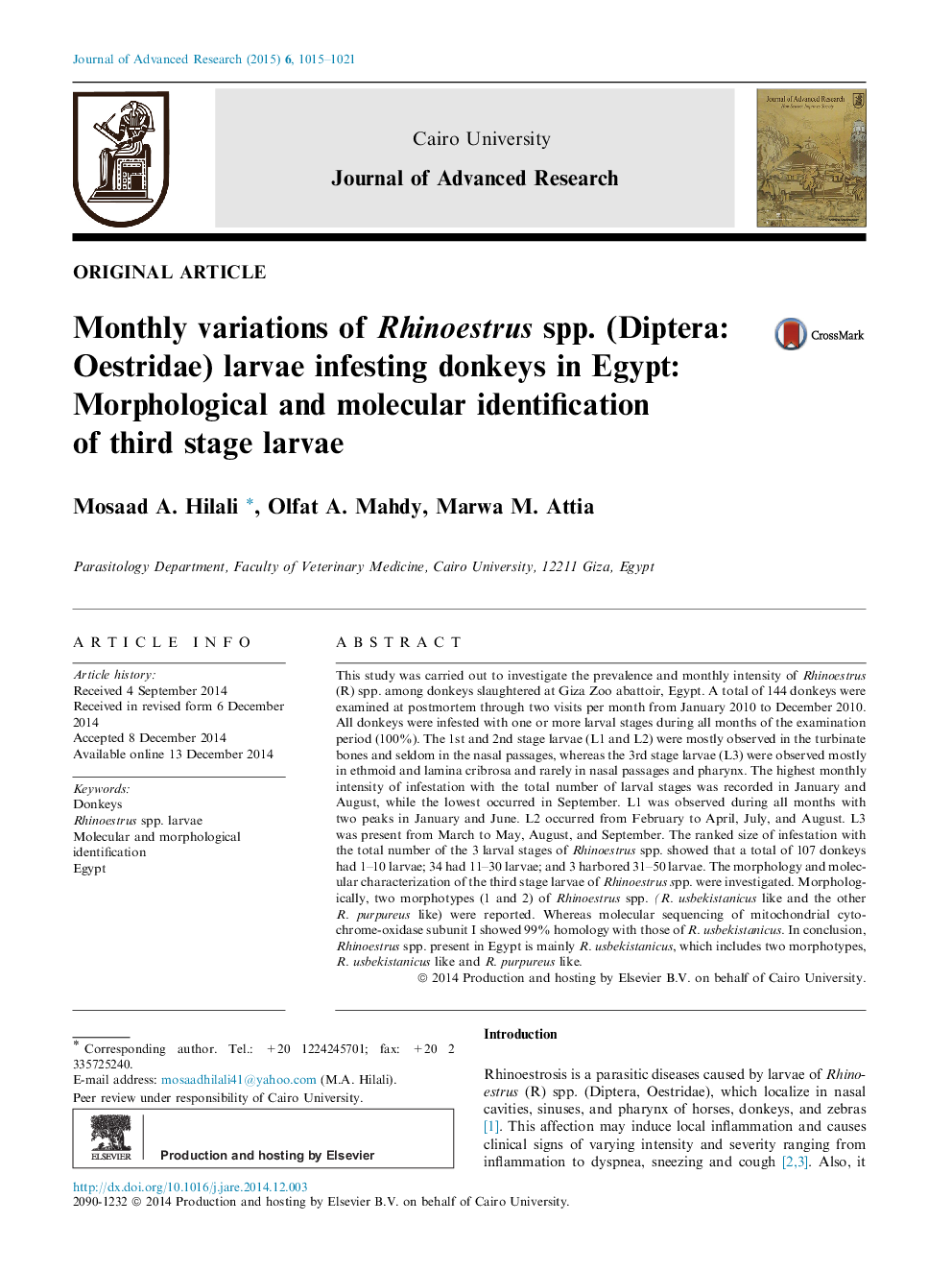| کد مقاله | کد نشریه | سال انتشار | مقاله انگلیسی | نسخه تمام متن |
|---|---|---|---|---|
| 826092 | 907901 | 2015 | 7 صفحه PDF | دانلود رایگان |

This study was carried out to investigate the prevalence and monthly intensity of Rhinoestrus (R) spp. among donkeys slaughtered at Giza Zoo abattoir, Egypt. A total of 144 donkeys were examined at postmortem through two visits per month from January 2010 to December 2010. All donkeys were infested with one or more larval stages during all months of the examination period (100%). The 1st and 2nd stage larvae (L1 and L2) were mostly observed in the turbinate bones and seldom in the nasal passages, whereas the 3rd stage larvae (L3) were observed mostly in ethmoid and lamina cribrosa and rarely in nasal passages and pharynx. The highest monthly intensity of infestation with the total number of larval stages was recorded in January and August, while the lowest occurred in September. L1 was observed during all months with two peaks in January and June. L2 occurred from February to April, July, and August. L3 was present from March to May, August, and September. The ranked size of infestation with the total number of the 3 larval stages of Rhinoestrus spp. showed that a total of 107 donkeys had 1–10 larvae; 34 had 11–30 larvae; and 3 harbored 31–50 larvae. The morphology and molecular characterization of the third stage larvae of Rhinoestrus spp. were investigated. Morphologically, two morphotypes (1 and 2) of Rhinoestrus spp. (R. usbekistanicus like and the other R. purpureus like) were reported. Whereas molecular sequencing of mitochondrial cytochrome-oxidase subunit I showed 99% homology with those of R. usbekistanicus. In conclusion, Rhinoestrus spp. present in Egypt is mainly R. usbekistanicus, which includes two morphotypes, R. usbekistanicus like and R. purpureus like.
Journal: Journal of Advanced Research - Volume 6, Issue 6, November 2015, Pages 1015–1021